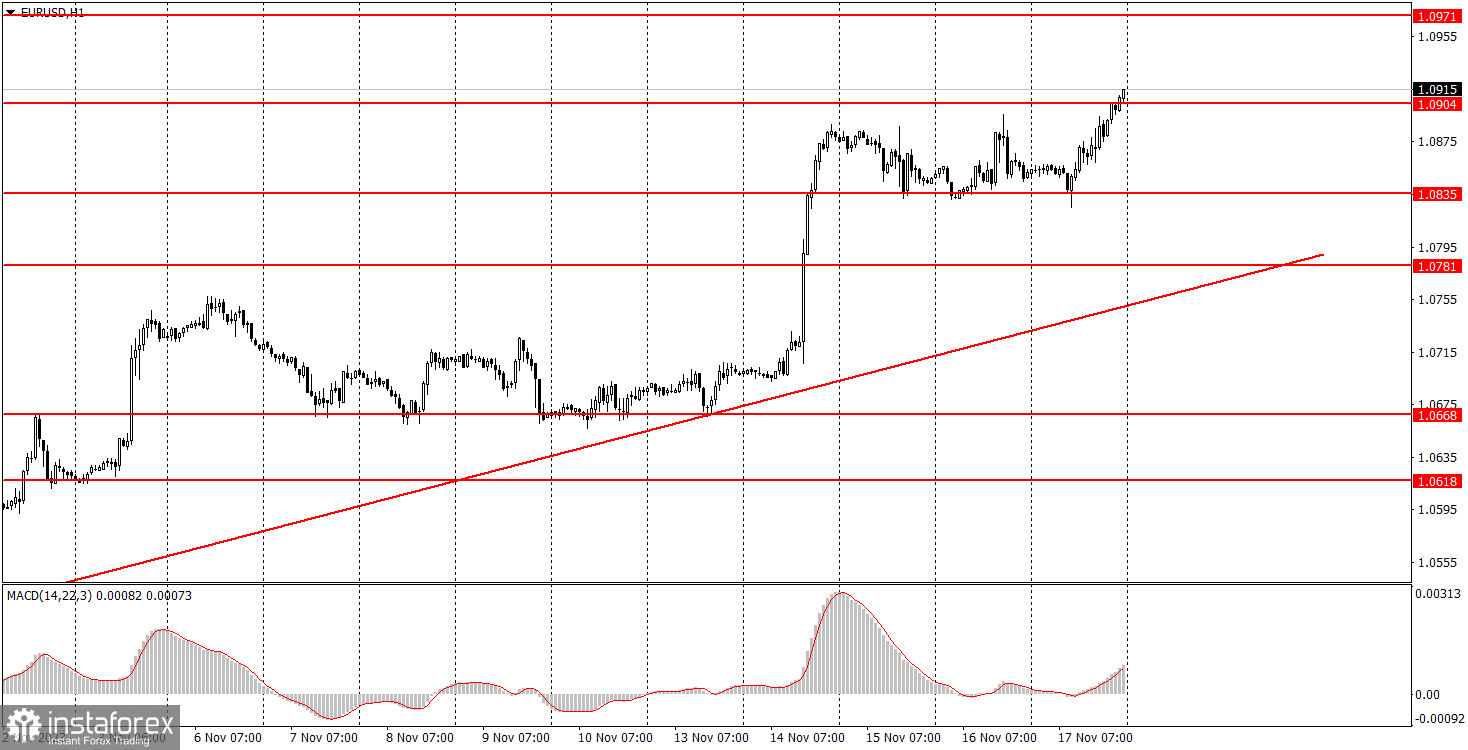Analyzing Friday's trades:
EUR/USD on 30M chart

EUR/USD extended its upward movement on Friday. In fact, the pair traded between the levels of 1.0835 and 1.0904 for most of the day, but it still rallied at the end of the day. Thus, even without a correction against Tuesday's substantial growth, the euro continued to strengthen against the US dollar. In our opinion, this was quite strange, as the pair shouldn't have grown as much on Tuesday, as we have already mentioned. It should not have happened on Friday either, as there were no logical reasons behind it. Nevertheless, the euro has gained significantly for the week, but the upward movement, which has been ongoing for a month and a half, is still considered a correction.
On Friday, only the second estimate of the eurozone Harmonized Index of Consumer Prices was released. Naturally, it did not differ from the first estimate, so the market did not react to this report. Meanwhile, there were no interesting events or reports in America.
EUR/USD on 5M chart

On the 5-minute chart, only one trading signal was generated. During the European session, the price bounced off the level of 1.0835, afterwards it managed to rise to the 1.0896-1.0904 range by the end of the day and even overcame it. Obviously, beginners could close a long position before reaching this area, but in any case, a profit was obtained from it. It amounted to at least 45 pips.
Trading tips on Monday:
On the 30-minute chart, the corrective phase remains intact. It started another round of this phase due to the U.S. inflation data. Despite the substantial growth, a correction is still a correction. Therefore, we expect it to come to an end and the downtrend to resume. Unfortunately, the recent U.S. reports have been very weak, which prevents the pair from reviving the downward movement. The key levels on the 5M chart are 1.0526, 1.0568, 1.0611-1.0618, 1.0668, 1.0733, 1.0767-1.0781, 1.0835, 1.0896-1.0904, 1.0936, 1.0971-1.0981, 1.1011. A stop loss can be set at a breakeven point as soon as the price moves 15 pips in the right direction. On Monday, there are no significant events planned in the European Union and the United States, so EUR/USD will likely see low volatility, but considering last week's movement, the corrective phase may persist even without any reason and grounds.
Basic trading rules:
1) Signal strength is determined by the time taken for its formation (either a bounce or level breach). A shorter formation time indicates a stronger signal.
2) If two or more trades around a certain level are initiated based on false signals, subsequent signals from that level should be disregarded.
3) In a flat market, any currency pair can produce multiple false signals or none at all. In any case, the flat trend is not the best condition for trading.
4) Trading activities are confined between the onset of the European session and mid-way through the U.S. session, post which all open trades should be manually closed.
5) On the 30-minute timeframe, trades based on MACD signals are only advisable amidst substantial volatility and an established trend, confirmed either by a trend line or trend channel.
6) If two levels lie closely together (ranging from 5 to 15 pips apart), they should be considered as a support or resistance zone.
How to read charts:
Support and Resistance price levels can serve as targets when buying or selling. You can place Take Profit levels near them.
Red lines represent channels or trend lines, depicting the current market trend and indicating the preferable trading direction.
The MACD(14,22,3) indicator, encompassing both the histogram and signal line, acts as an auxiliary tool and can also be used as a signal source.
Significant speeches and reports (always noted in the news calendar) can profoundly influence the price dynamics. Hence, trading during their release calls for heightened caution. It may be reasonable to exit the market to prevent abrupt price reversals against the prevailing trend.
Beginning traders should always remember that not every trade will yield profit. Establishing a clear strategy coupled with sound money management is the cornerstone of sustained trading success.





















